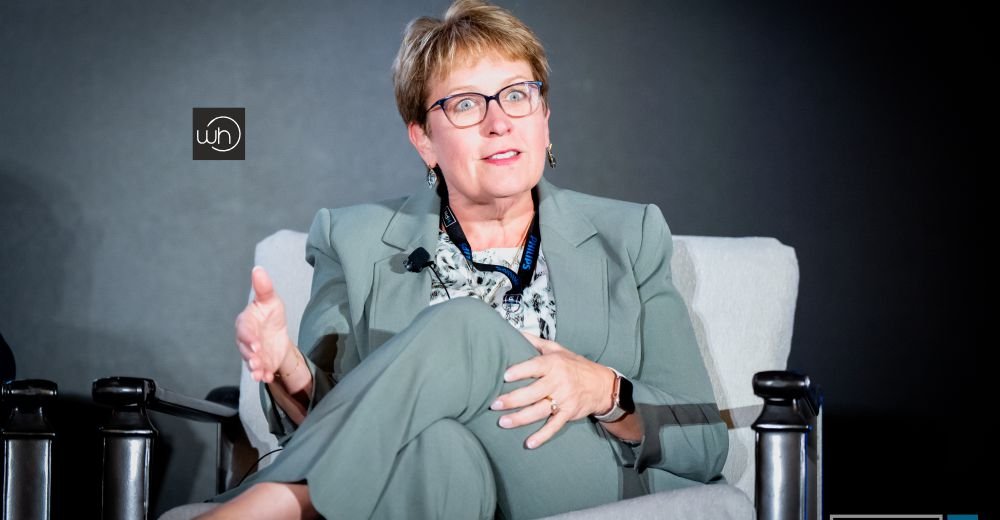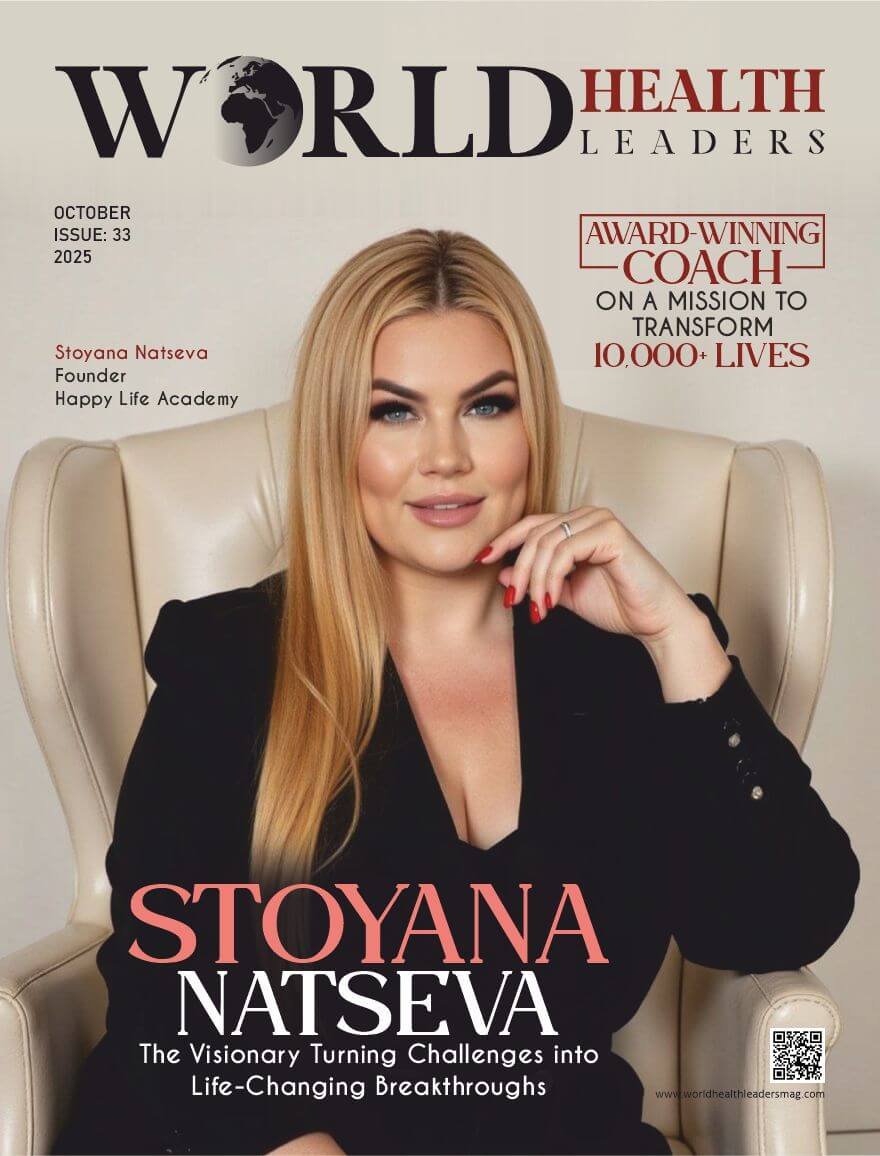Health care has always been about people, but these days, it’s also about the tools that make care possible. A phone call to schedule an appointment, a reminder to get a mammogram or even a voice on the other end of the line helping with billing – behind each of those moments is technology. These are the simple steps that guide patients from one stage of care to the next.
At the Medical University of South Carolina (MUSC), much of that work is being led by Crystal Broj, who serves as Chief Digital Transformation Officer. Her path to this role wasn’t straight or predictable. She spent years working in insurance, health clubs, nonprofits and consulting before stepping into health care. That background helps her to look at challenges in a new way, and it comes through in her leadership. What matters to her is using technology to help patients and give doctors back their time.
Let’s explore how Crystal is transforming health care through technology and patient-centered innovation!
A Journey Shaped by Variety
“My career has been anything but linear, and I think that’s part of what makes my perspective unique.” Those words sum up a path that started well outside of medicine. Along the way, she worked in insurance, health clubs, nonprofits and consulting – dynamic fields that each taught her something different. Insurance sharpened her ability to handle complexity. Health clubs showed her the importance of customer experience. Nonprofits underscored the power of mission-driven work. And consulting gave her the flexibility to step into new environments and lead change.
Her first move into health care came at NorthShore University Health System, where she helped to build a mobile app that tied together different electronic health record systems, giving patients a single, unified way to connect. Before that, as Chief Technology and Innovation Officer at the American Association of Diabetes Educators, she launched danaTech.org, an award-winning platform that put vital diabetes device education directly in the hands of patients and families.
When she joined MUSC in 2022, she brought not only technical know-how but also a clear purpose to push digital progress across care, research and academics. Her focus is on blending innovation with empathy, using tools not to replace human connection but to strengthen it and make care feel more personal.
Transformative Wins that Matter
The role she stepped into was ambitious, but the accomplishments since then have been remarkable. She highlights several MUSC Health initiatives that have not only delivered operational improvements but have also made a visible difference for patients and staff.
She points to automation as a key driver, particularly in patient access. AI Agents from Notable have generated $4.4 million in reimbursement revenue, while removing friction from preregistration processes. Moreover, 2.5 million appointment reminders have been sent, keeping patients on track with their care. Completed digital pre-visit registrations reached 1.1 million without human intervention, and eight active care-gap campaigns are now running simultaneously to close preventive and chronic care gaps.
Smart scheduling has also proved successful. Through DexCare, more than 4,000 appointments were booked online in just two months, demonstrating that patients are eager to engage with streamlined scheduling systems. Financial stress has also been addressed through a digital assistant chatbot, which completed 2,800 online sessions to help patients find financial payment options and assistance.
“These aren’t just stats – they’re proof that digital transformation, when done well, improves experiences and outcomes for everyone and delivers tangible results for the hard work my small team does every day,” shared Crystal.
From Pilot to Scaled Success
Among the many initiatives, one stands out as a testament to the power of starting small and scaling smart. A breast cancer screening outreach project with Notable began in just one region of the state. The approach was simple yet powerful: automate outreach, scheduling and reminders for mammograms.
The results spoke volumes: 3,931 appointments were scheduled; 1,855 screenings were completed, and most importantly, 217 abnormal findings were identified, ensuring that patients returned for additional care. “In a small but very real way, we were saving lives – helping women to get the care they needed, when they needed it,” said Broj.
The pilot provided not just proof of concept but also a framework for scale. Because the team had set clear goals, developed solid messaging and established trust with stakeholders, expansion across the system became a natural next step. Building on these successes, they rolled out eight more care-gap campaigns, from flu shot reminders to well-child visits, applying the same proactive model to drive preventive care at scale.
AI That Transforms Access and Workflows
The deployment of artificial (AI) intelligence has become a cornerstone of transformation. At the center of this effort is Emily, an AI-powered voice-bot designed to improve patient access. The results over the past year have been striking: 1.4 million calls were answered, with 17% fully automated without human intervention. The call abandonment rate dropped from 7.3% to 3.9%, and the average speed to answer improved from 27 seconds to 14 seconds.
Emily has become a true 24/7 partner for patients, providing support in both English and Spanish, whether scheduling an appointment, checking a balance or finding information. Not only has she increased efficiency, but she has also contributed to improved Press Ganey patient satisfaction scores, demonstrating the direct impact technology can have on patient experience.
Using new technology from the vendor: Amelia-SoundHound, Emily is now expanding to Revenue Cycle with 25% automation of calls with the next move to the Pharmacy space.
On the provider side, ambient AI (Nuance DAX) has alleviated one of the most pressing burdens: after-hours charting. By listening during visits and capturing and structuring documentation, DAX has reduced after-hours work by 37.5%, freeing clinicians to spend more time with patients and reclaim balance in their personal lives.
Driving Adoption Through Inclusion
Technology alone doesn’t change health care – adoption, trust and engagement do. From the start, clinicians and staff are part of the design process, shaping workflows to fit their needs. Teams are kept informed about what’s changing and why, creating clarity and confidence.
Early wins build momentum, while peer champions help to spread adoption across departments. Patient and Family Advisory Councils (PFACs) review language and design to ensure tools are clear and helpful. Continuous feedback allows adjustments in real time, reinforcing trust and ownership.
“The best tools in the world won’t make a difference if no one uses them,” Broj explained, “so adoption is always a priority.” This mindset guides every rollout, making transformation something people embrace rather than endure.
Confronting the hard realities of change
Despite the successes, the journey has not been without challenges. Resistance to change is a constant in health care systems, and overcoming it requires patience, communication and proof. Early successes have been critical in building confidence and reducing skepticism. Governance and training structures help to keep pace with rapid innovation while maintaining patient safety as the ultimate priority.
Perhaps the most important lesson learned is that technology, while essential, is never the whole solution. Broj emphasized that true transformation is sustained by the human elements that give technology its power. “Technology is only part of the solution,” she reflected, “relationships, leadership and trust are what make transformation possible.”
Guidance for the Next Generation of Leaders
For those beginning their digital transformation journeys, her advice is both practical and profound. Focus first on problems worth solving rather than chasing shiny new technologies. Build coalitions across departments so that allies are ready to champion the change. Measure success not only with data but also with human stories—because numbers show impact, but stories give them meaning. And most importantly, she said, invest equally in change management and in technology. She believes that transformation is a team sport, and success depends on the people who come along for the journey.
Lessons in Hindsight
Looking back, Broj said there are moments she would approach differently. One key lesson is the importance of involving Information Technology (IT) early in the process. Unlike traditional enterprise projects that follow a waterfall approach, digital transformation demands agility – starting small, scaling quickly and adding features iteratively. This pace can create challenges if IT teams are not aligned from the outset.
Broj explained that partnerships with vendors have also required a mindset shift. Many vendors bring not just solutions but evolving products, requiring a willingness to “build the plane while flying it.” Balancing clarity of capabilities with flexibility to innovate together, she said, has been a defining learning curve.
The Power of Shared Knowledge
At the core of her philosophy is a belief in the collective strength of the health care community. She emphasized that transformation is not about guarding a secret formula but about sharing openly. Whether through conferences, podcasts or LinkedIn connections, she has seen firsthand how peers across health systems are often eager to exchange advice, lessons learned and even tools.
“Health care may feel like a big world, but it’s actually small, and the connections we make are powerful.” This brand of generosity, she believes, is what makes everyone stronger and accelerates the shared goal of making health care better for all.
Digital Transformation is a Team Sport
At the end of the day, digital transformation isn’t accomplished alone. We’re all working toward the same goal – making care better for patients, providers and team members, whether they’re on the front lines or behind the scenes.
Health care may feel vast, but it’s really small, and the connections we build are powerful. It’s not about guarding a “secret sauce”, it’s about sharing. Be curious: attend conferences, listen to podcasts, reach out on LinkedIn. Often, peers in other systems are happy to share advice, pitfalls, or even dashboards and presentations. That generosity makes all of us stronger, bringing us closer to a shared goal: better health care for everyone.





